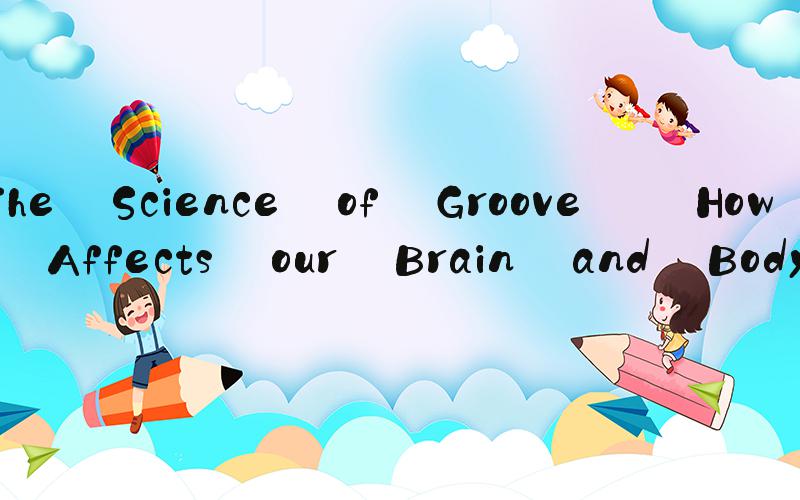
 Groove: Exploring the Power of Rhythm and Movement
Groove: Exploring the Power of Rhythm and MovementGroove is a term that's often used to describe a musical rhythm or beat that's infectious, inspiring, and impossible to resist. But groove is more than just a catchy tune. It's a phenomenon that's deeply rooted in our biology, culture, and social interactions. Groove is about the power of rhythm and movement to express our emotions, connect with others, and create a sense of community. In this article, we'll explore the science, history, and culture of groove, and discover the many ways in which it can enrich our lives.
The Science of Groove: How Rhythm Affects our Brain and BodyThe experience of groove is not just a matter of taste or preference. There's actually a scientific basis for why certain rhythms and beats can make us feel good, and why we can't help but move to them. Studies have shown that rhythmic music can stimulate the reward centers of our brain, releasing dopamine, the "feel-good" neurotransmitter, and activating the motor cortex, which controls movement. This explains why we often feel a sense of euphoria, pleasure, and freedom when we dance or listen to music that grooves. Furthermore, there's evidence that group dancing and singing can promote social bonding and reduce stress, as it synchronizes our movements and breathing patterns.
Groove through History: A Journey from Africa to America and BeyondThe roots of groove can be traced back to Africa, where music and dance have been an integral part of culture and ritual for millennia. African rhythms are characterized by complex polyrhythms, call-and-response patterns, and improvisation, which have influenced countless genres of music, including jazz, blues, funk, and hip-hop. The slave trade brought African music to the Americas, where it blended with European, indigenous, and other African influences to create a rich and diverse musical tradition. From the gospel choirs of the civil rights movement to the disco clubs of the 70s and the rave parties of the 90s, groove has been a constant presence in the music and dance of diverse communities and subcultures around the world.
Groove as Culture: The Politics and Identity of Dance and MusicGroove is not just a musical or physiological phenomenon. It's also a cultural and social practice that reflects and shapes our values, beliefs, and identities. Different styles of groove can be associated with specific subcultures, such as punk, metal, rave, or hip-hop, each with its own aesthetics, politics, and symbols. For example, the breakdancing and graffiti of hip-hop culture emerged as forms of self-expression and resistance against social and economic marginalization. Similarly, the rave culture of the 90s, with its emphasis on community, freedom, and transcendence, was a reaction to the alienation and commercialism of mainstream culture. Groove can also be a site of conflict and negotiation, where different groups coexist, compete, or collaborate, and where issues of race, gender, sexuality, and class intersect and intersect.
Groove in Practice: How to Find, Create, and Share your GrooveGroove can be experienced and expressed in many ways, from dancing to drumming, singing to playing an instrument, or simply tapping your foot to a song. Finding your groove means discovering the rhythms and movements that resonate with your body and soul, and expressing yourself authentically and creatively. Creating your groove means exploring new sounds, rhythms, and styles, and incorporating them into your own unique expression. Sharing your groove means connecting with others, collaborating, and co-creating new experiences and meanings. Whether you're a professional musician or dancer, or simply a beginner or a fan, there's always a way to groove and to enhance your life with the power of rhythm and movement.
The Power of Groove: Transforming our Lives and our WorldUltimately, the power of groove lies in its capacity to transform our lives and our world. Groove can help us heal from trauma, express our emotions, and connect with others in meaningful ways. It can promote creativity, innovation, and curiosity, by encouraging us to explore new ideas and experiment with different forms of expression. It can raise our consciousness, by inviting us to question our assumptions, to challenge our biases, and to embrace diversity and inclusivity. And it can inspire us to work towards a better world, by breaking down barriers, fostering empathy and compassion, and promoting social justice and equality. In short, groove is not just a musical or cultural phenomenon, but a human and transformative one, that can help us live more fully and meaningfully, and create a more vibrant and harmonious world.
